Cleaning a garden is very important. It helps keep the garden looking their best. You can clean the garden once a week or once every two weeks to get good results. Of course, cleaning the garden requires the right tools to support your activities. There are some garden tools that you can use according to your need. But did you know that you also need to take care of your garden tools? Ideally, garden tools should be cleaned right after each use to remove soil and prevent disease. Caring for and cleaning garden tools is very important to maintain their performance and longevity.

Tips to Clean Garden Tools
Keeping your tools clean is the best way to prolong their life and to avoid spending money on new ones in between growing seasons. Here are some tips to clean garden tools.
Washing
Dirty tools are a breeding ground for bacteria that spread soil-borne diseases to plants. A regular cleaning and disinfection routine helps prevent disease in your garden as well. Begin by washing your tools under a strong spigot or using a garden hose with a forceful spray setting. Be sure to wash all parts of the tool including the handle.
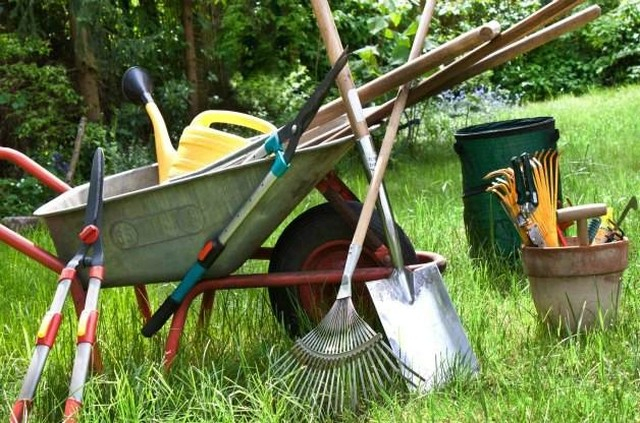
Because garden tools are often used for dirty activities, it is better to carry out routine maintenance. What you can do now is wash it regularly so that it has a cleaner surface and is free of bacteria. Gather all the garden tools you have and spray them using a garden hose or you can put them right under the faucet and scrub them using a hard brush. Wash Garden Tools Regularly from @gardens_nursery
Scrubbing
Getting rid of wet dirt from shovels, trowels and shears is an important step in keeping these tools clean. Dirt left on garden tools can carry disease-causing fungi and bacteria from one plant to another, or even to you as you handle them. A blast of water from a garden hose can usually remove most soil, but if your tool is particularly dirty or caked in crusty dirt, scrub it with steel wool or a wire brush to loosen and then wash off the debris.
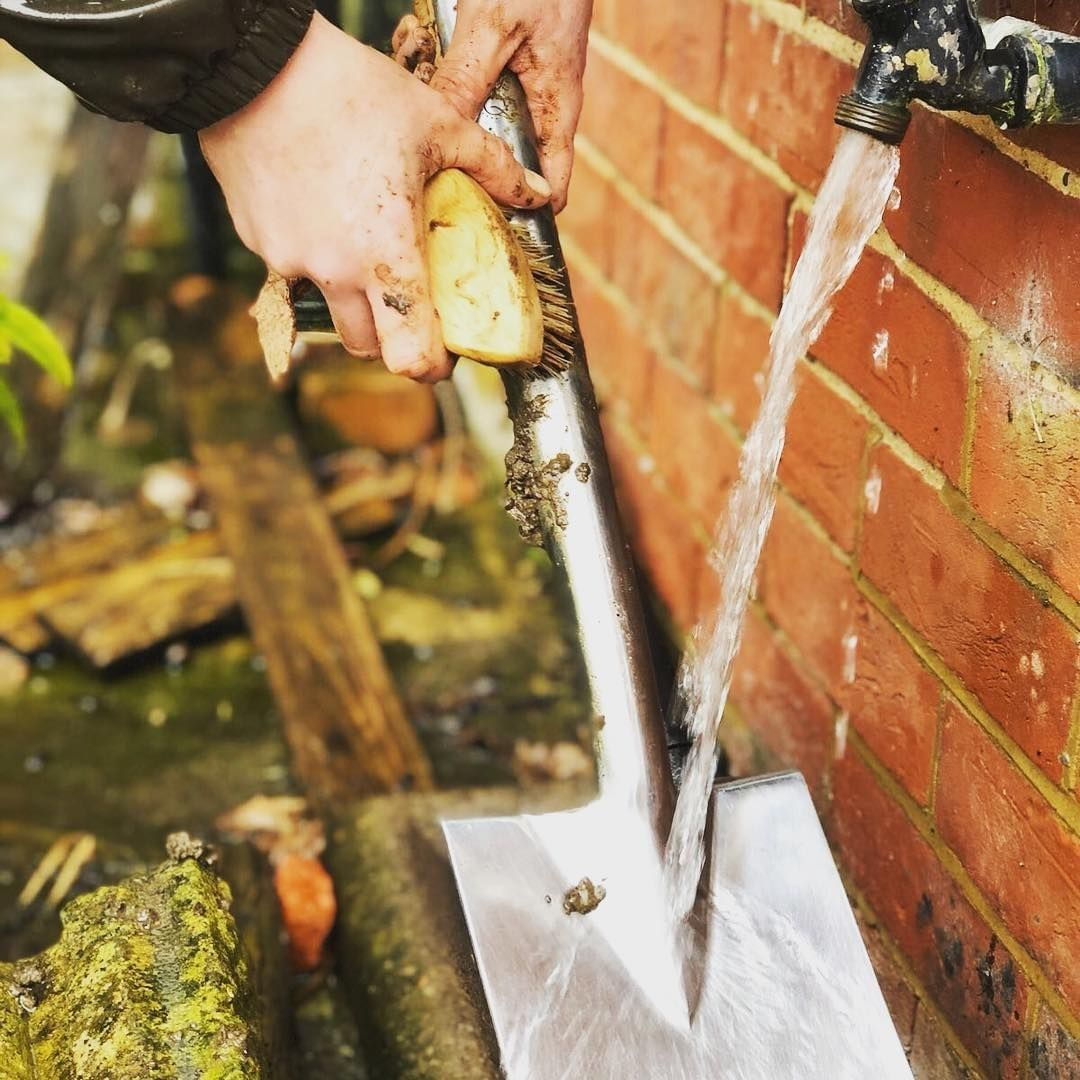
So that your shovel can be cleaner from dirt, brushing it is a maintenance activity that you can do. Brush this shovel just under running water so the dirt can wash away and fall off on its own. The shovel is one of the main tools that can be used to dig the ground in order to plant the various types of plants that you have. Shovel Scrubbing of Soil from @oxfordbrushcompany
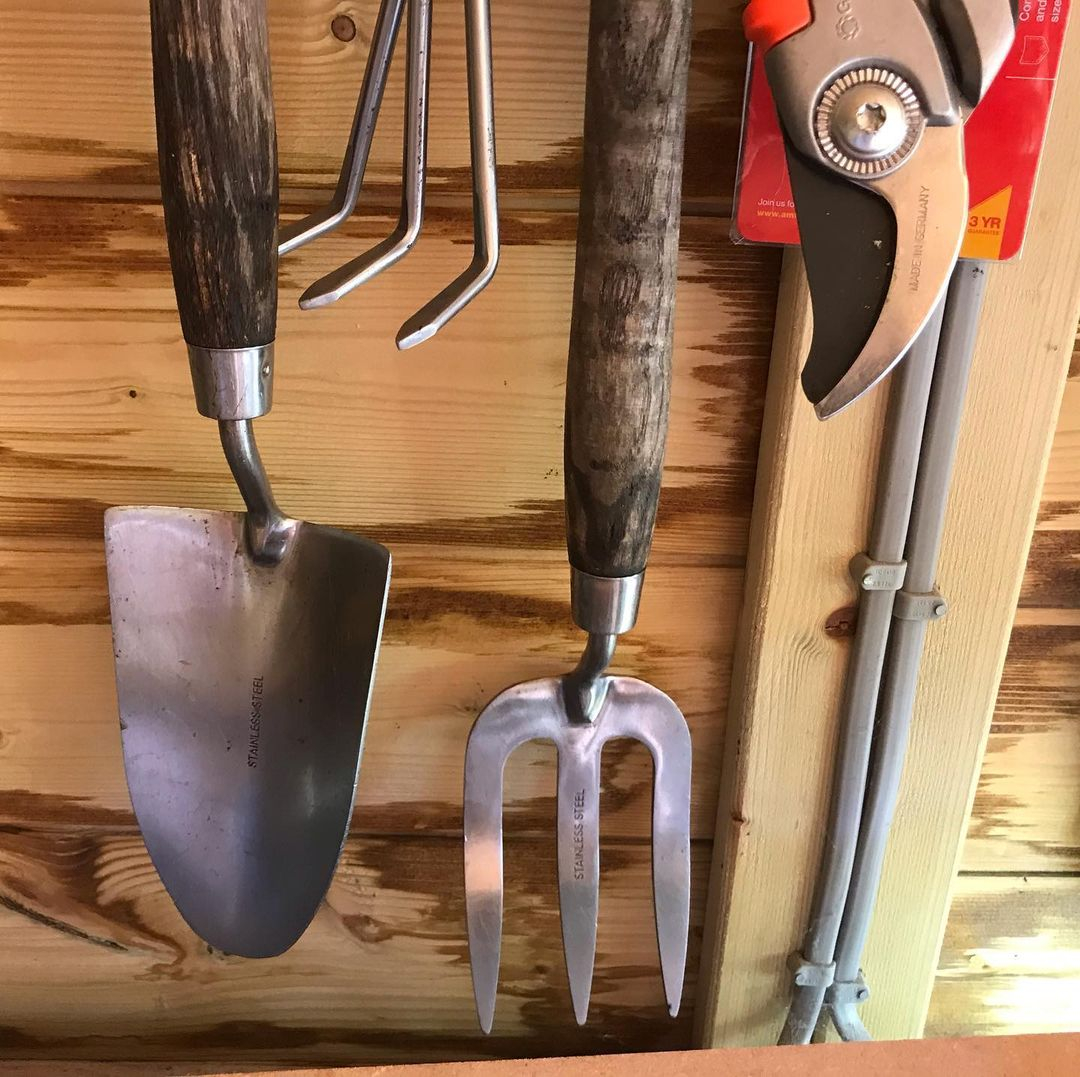
Take a look at some of these cleaned garden tools, don’t they look more shiny and free from dirt and bacteria? Yes, you can store it in a garden shed which is equipped with several hooks so that it can be used as an area to hang it. This garden tool is made of copper which is easily corroded if you don’t take good care of it. After Cleaning Garden Tools from @laveggarden
Soak, Rinse and Dry the Tools
To help remove residual soil, take a bucket then fill it with a hot water and add dish soap to wash the garden tools. Soak your garden tools for about 15-20 minutes and rince them to make sure they are clean. After that, wipe your tools thoroughly dry before stowing them away. Rust emerges when moisture and metal mix, so storing damp tools invites rust to tag along for the ride.
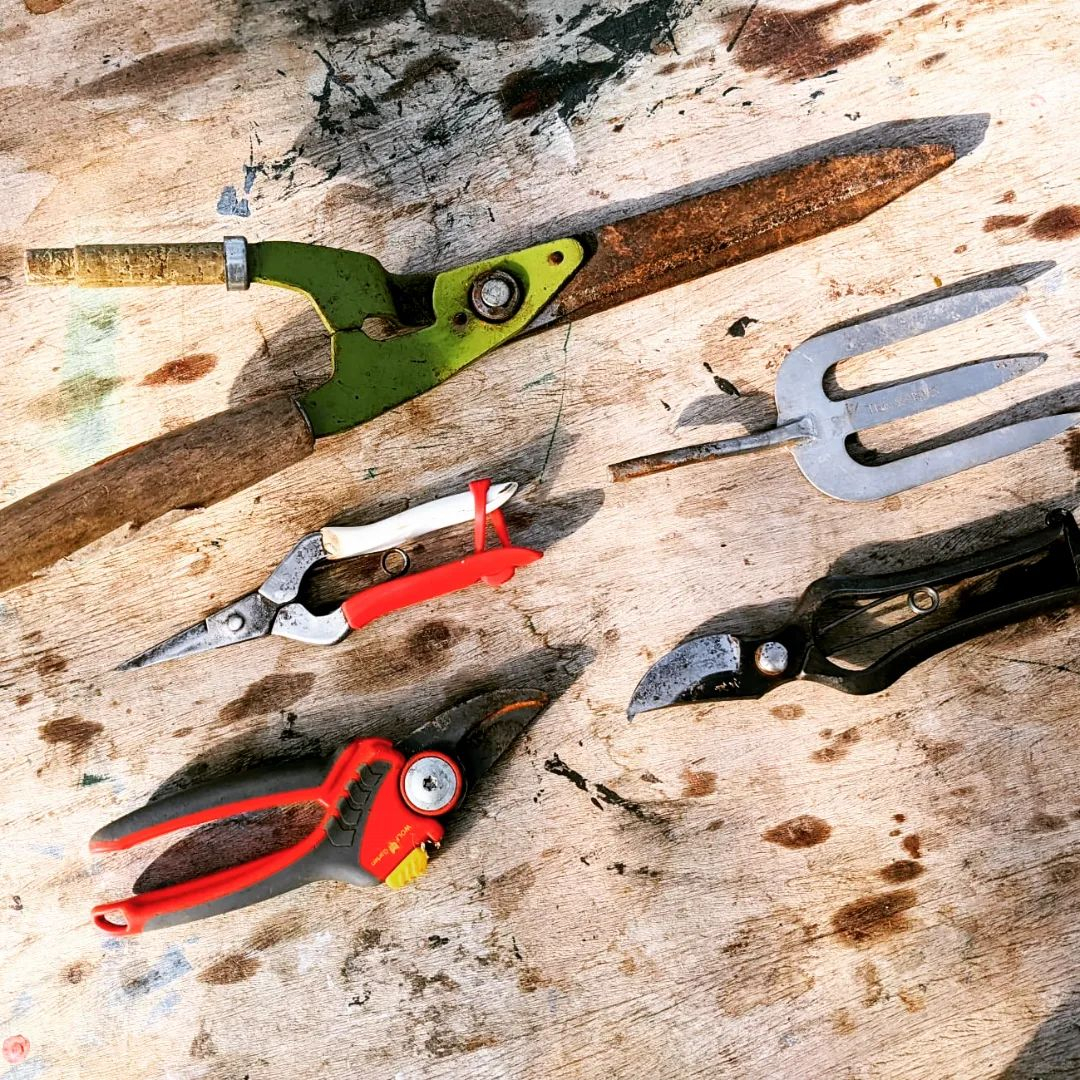
So that your garden equipment is cleaner and free from dirt, just soak it using vinegar or detergent water. This applies to small garden equipment so you don’t need a container that is too large to soak it in, this maintenance is quite easy to do and not complicated. Buy vinegar at the nearest store at a fairly low price. Soak Garden Tools from @brockwell_greenhouses

After finishing washing and soaking garden tools, you can dry them right in the sun. This is intended so that your garden tools are not easily damaged, too damp or moldy. Arrange them neatly and try not to place them vertically so that your garden tools can dry to the maximum. Dry the Tools from @solanacenter
Disinfecting
Garden tools must be sanitized after each use to remove disease-causing fungi and insect eggs. While rinsing or washing pruning shears and loppers may help, disinfecting is essential to keep these and other plant diseases from spreading to healthy plants. Disinfectants can be dipped, sprayed or wiped onto a variety of gardening tools, including pruners and shears. Most contain a combination of ingredients that kill many different diseases, and some are also safe to handle.

Vinegar is one of the cleaners that can be applied to your garden tools. Prepare a small container to soak these small garden shears and leave it for a few minutes so that the dirt that sticks is easier to clean and scrub. Rub it using a hard brush so that the rust that has arisen can be cleaned too. Soak in Vinegar from @chaosorganizing
Each type of garden tool certainly requires a different treatment in cleaning. Here, we have some ways to clean garden tools based on types so they are well maintained. Let’s check it out!
Lawn Mower
You might think a lawn mower isn’t worth cleaning, but it’s actually one of the most important tools in your garden and should be thoroughly cleaned every month to prevent build-up, corrosion and performance degradation. This includes a regular cleaning of the deck (the enclosed housing on the underside of your mower where the blade spins), as well as the engine itself.
Before you start, make sure the mower is completely cool and disconnected from its power source. It’s also a good idea to empty the gas tank and remove the spark plug wire. Next, find the filter cover or shroud and unscrew it to reveal the foam air filter. If it’s in poor condition – for example, with yellow stains or crumbling sections of foam – you should replace it with a new one. Then rinse the filter with soapy water and clean off any remaining grease. You can use a garden hose with an appropriate nozzle attachment for this job.
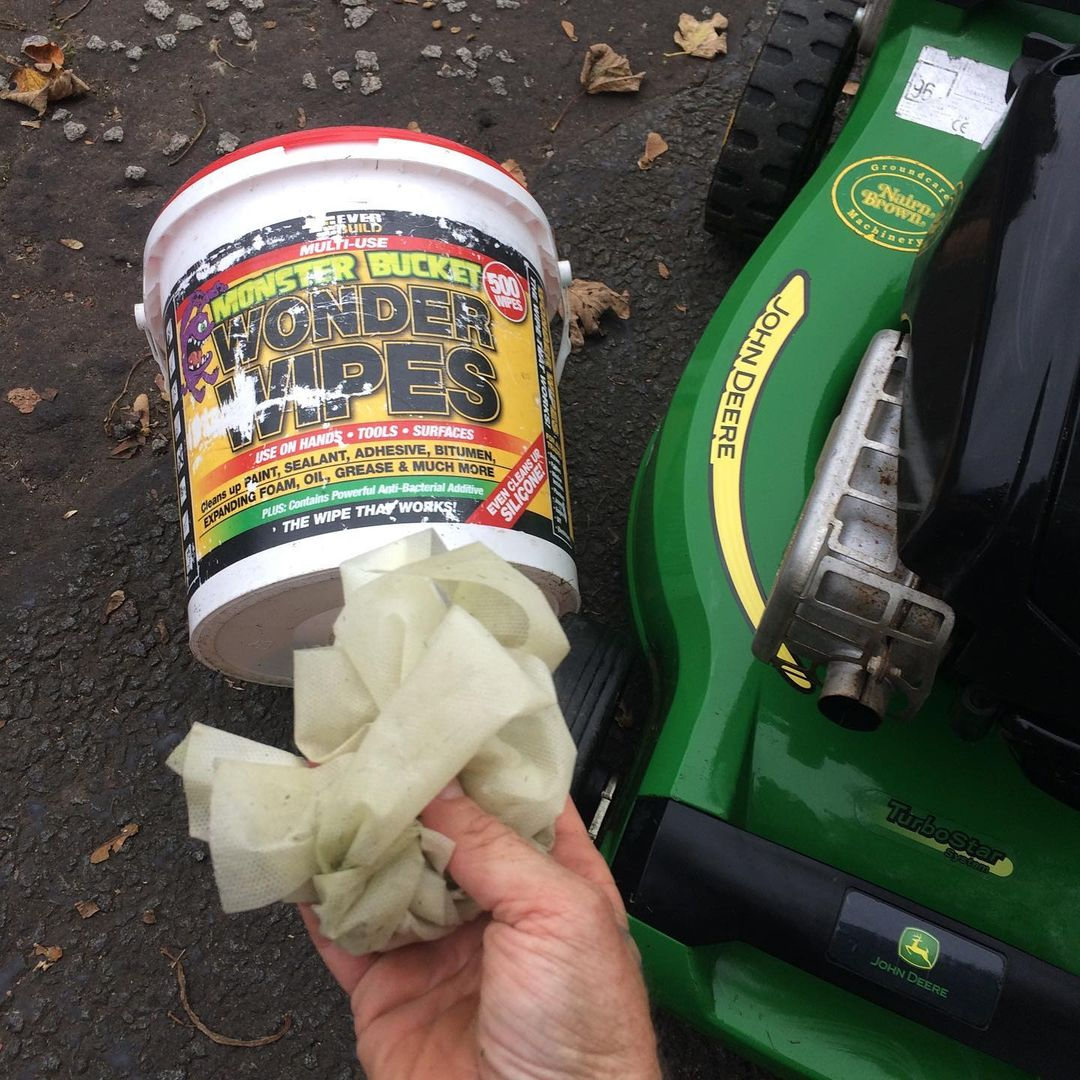
An easy way that you can do to do maintenance on a lawn mower is to use a tissue that can be combined with soap or cleaning fluid that can be obtained at the nearest store. Why use a tissue? Because tissue has a smoother surface and minimizes the surface of the lawn mower being easily scratched or damaged. Cleaning Lawnmower Wipes from @fgm_f20
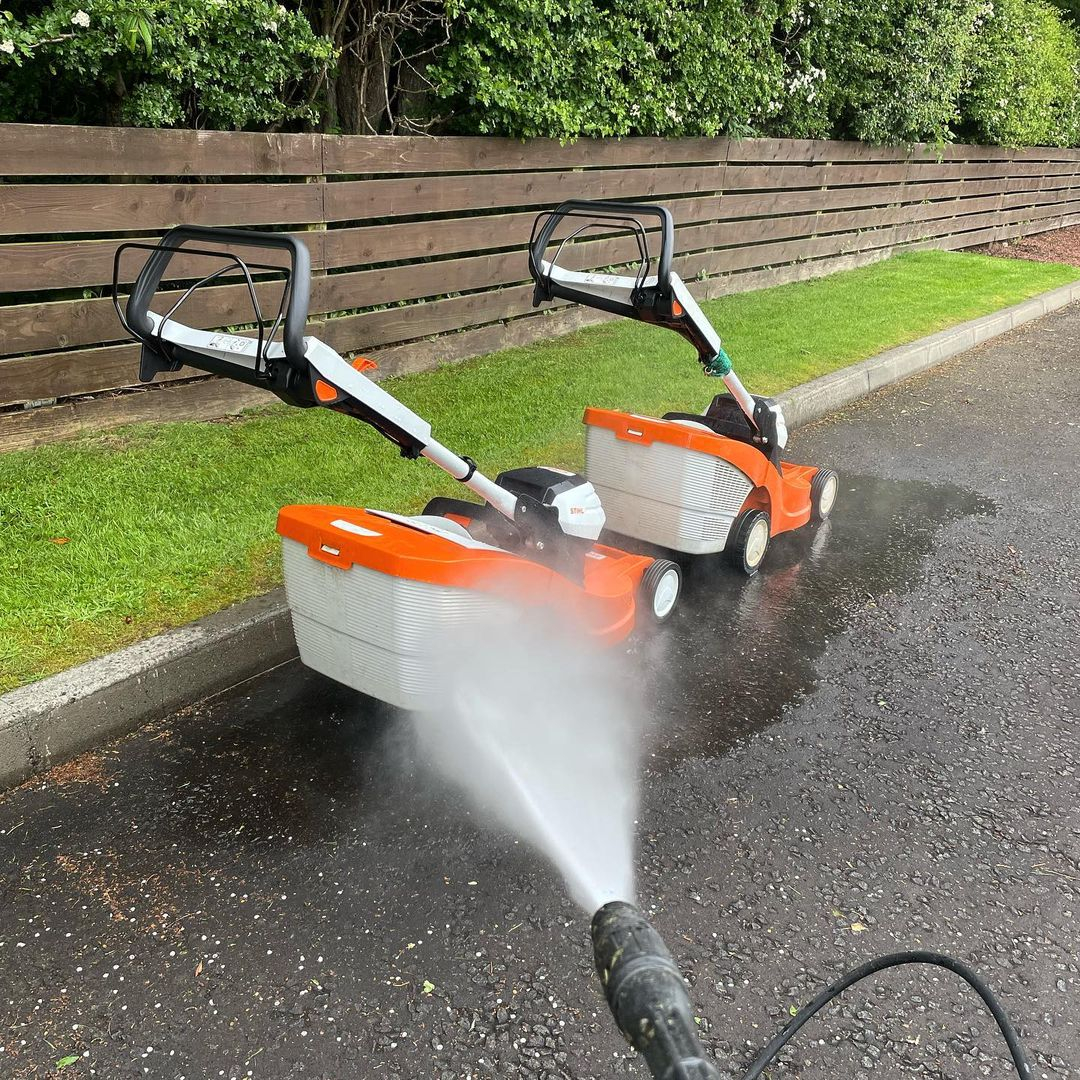
You can try this garden hose with a high-strength nozzle on a dirty lawn mower. This is one of the easiest maintenance activities you can do because it uses less energy and of course minimizes fatigue too. Try to use a long hose so that it can be used as needed. Spray Lawnmower from @fgm_f20
Large Scissors
Large scissors can be useful for a variety of tasks, from opening up seed and potting soil packages to cutting branches off shrubs. Keeping these tools clean is an important part of any gardener’s maintenance routine. A simple cleaning with water and a cloth should be sufficient for most gunky scissors. However, if the scissor blades are particularly sticky or rusty, a non scratch scouring pad and vinegar can help. Vinegar acts as a natural degreaser, breaking down grease and grime. In addition, it acts as a germ inhibitor.
Once the scissors are cleaned, wipe down the blades and handles with a lint-free cloth or paper towel. This will remove any remaining adhesive or smudges from the blades and protect them against rust. To prevent the scissors from becoming too dry and hard to use, apply a light coat of oil to the pivot point. This will keep the blades from rubbing together too harshly, causing them to dull and become stuck in the open or closed position.
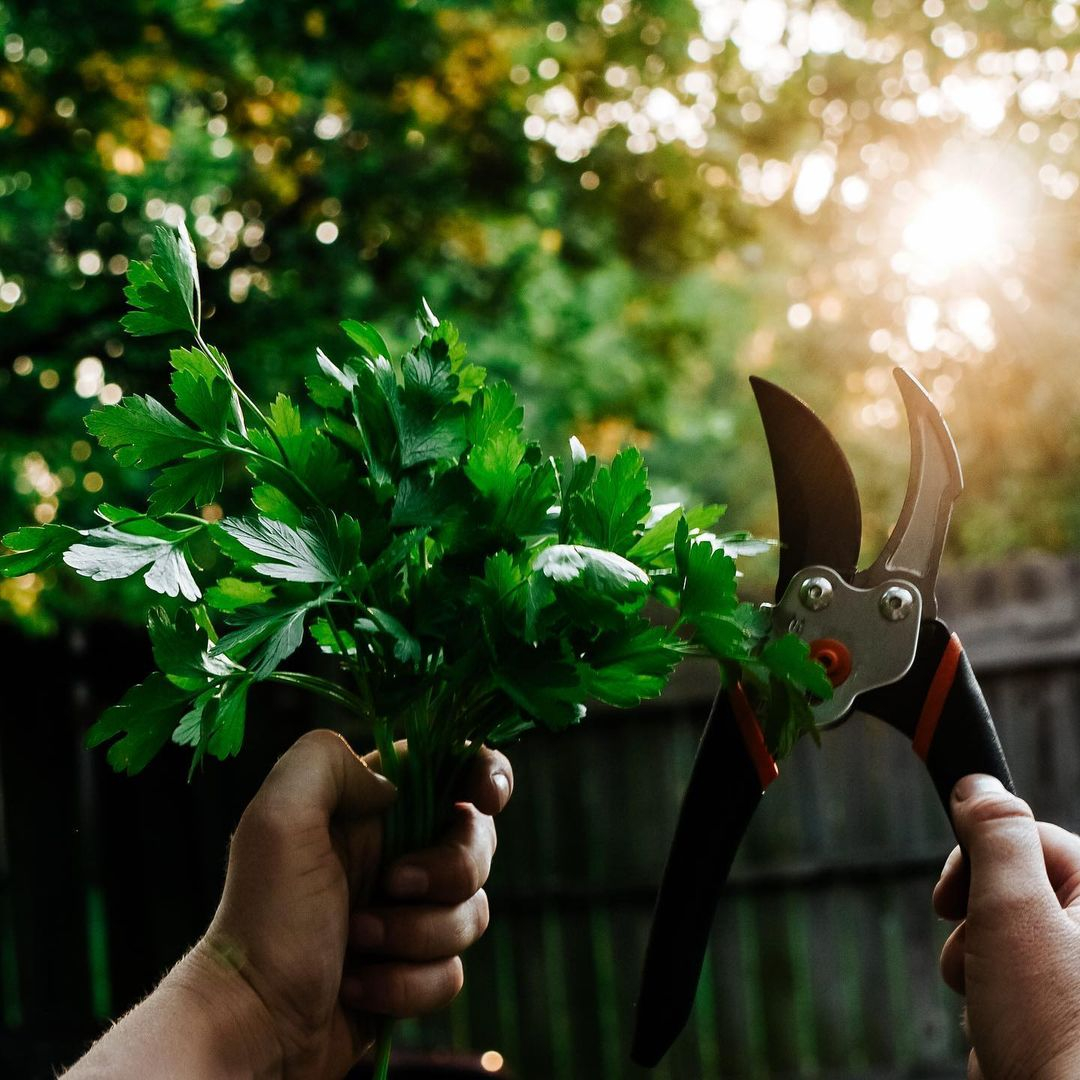
Scissors are one of the tools that can be used to help your garden activities. For example, you can cut celery from the root using these scissors. But it’s a good idea to take care of it by washing it after use to avoid any dirt adhering it and being able to minimize rust as well, just use running water from the tap. Wash Using Clean Water from @gardens_better_with_cats

It’s a good idea to wash the scissors after you’re done using them, why? This will reduce or minimize the occurrence of your garden tools to rust and easily corrode too. Keep the scissors clean and dry again, wipe using a microfiber cloth or tissue which has a thicker material so it doesn’t tear easily either. Wash After Use from @garden.blog.ua
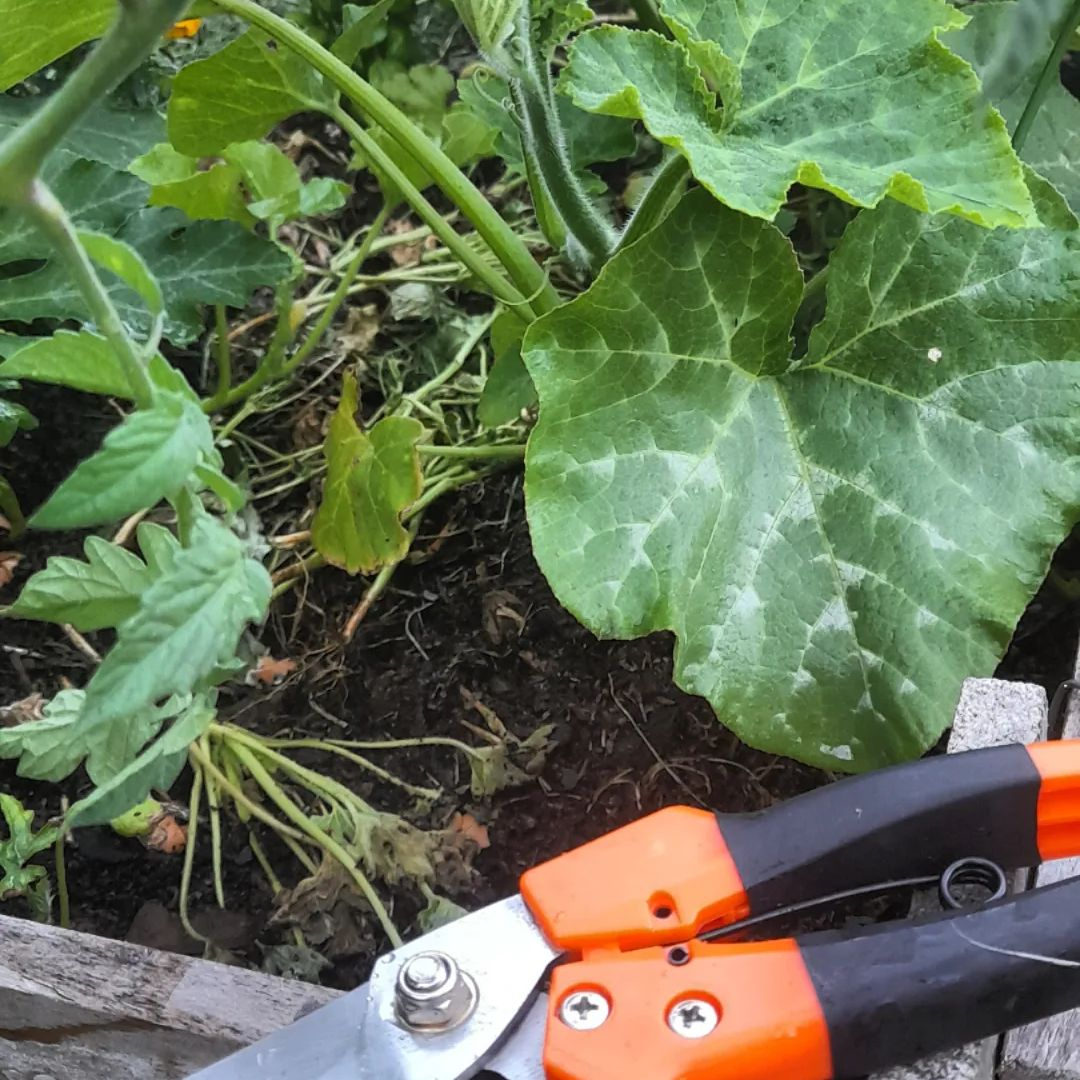
Pay attention to the scissor blades which are made of steel or stainless steel, you can clean them using a clean cloth and liquid soap which is easy to apply. Rinse using clean water so that it is maximized and does not leave any dirt or soil attached. Not only on the blade, but you can also clean the holder too. Soak With Vinegar When Rusty from @letsgrowfresh
Garden Rake
The garden rake is the most common tool that many homeowners will have in their shed or garage. It has a long handle and a head with stiff, short tines. This design makes it perfect for sweeping away leaves and other debris. However, the rake’s tines can vary depending on the purpose of the tool. Soil rakes, for example, have tines with large spaces between them to turn and till soil, while leaf rakes have closely spaced tines that are more like a hair comb to capture thin leaves.
No matter what type of rake you have, it’s important to keep it clean in order to minimize the spread of diseases between plants and weeds. The same bleach and water solution that works on the lawn mower and shears will also work on garden rakes. After cleaning the rake, it’s a good idea to treat the wood handle with boiled linseed oil or vegetable oil to prevent rot from forming.

Because garden rakes are directly related to the soil, you can carry out regular maintenance and cleaning. Do the cleaning after each use or once a week. Not only the garden rakes, but you can also clean the wooden holder, brush with clean water and detergent to make it more optimal. Clean the Garden Rakes from @canadianorganic
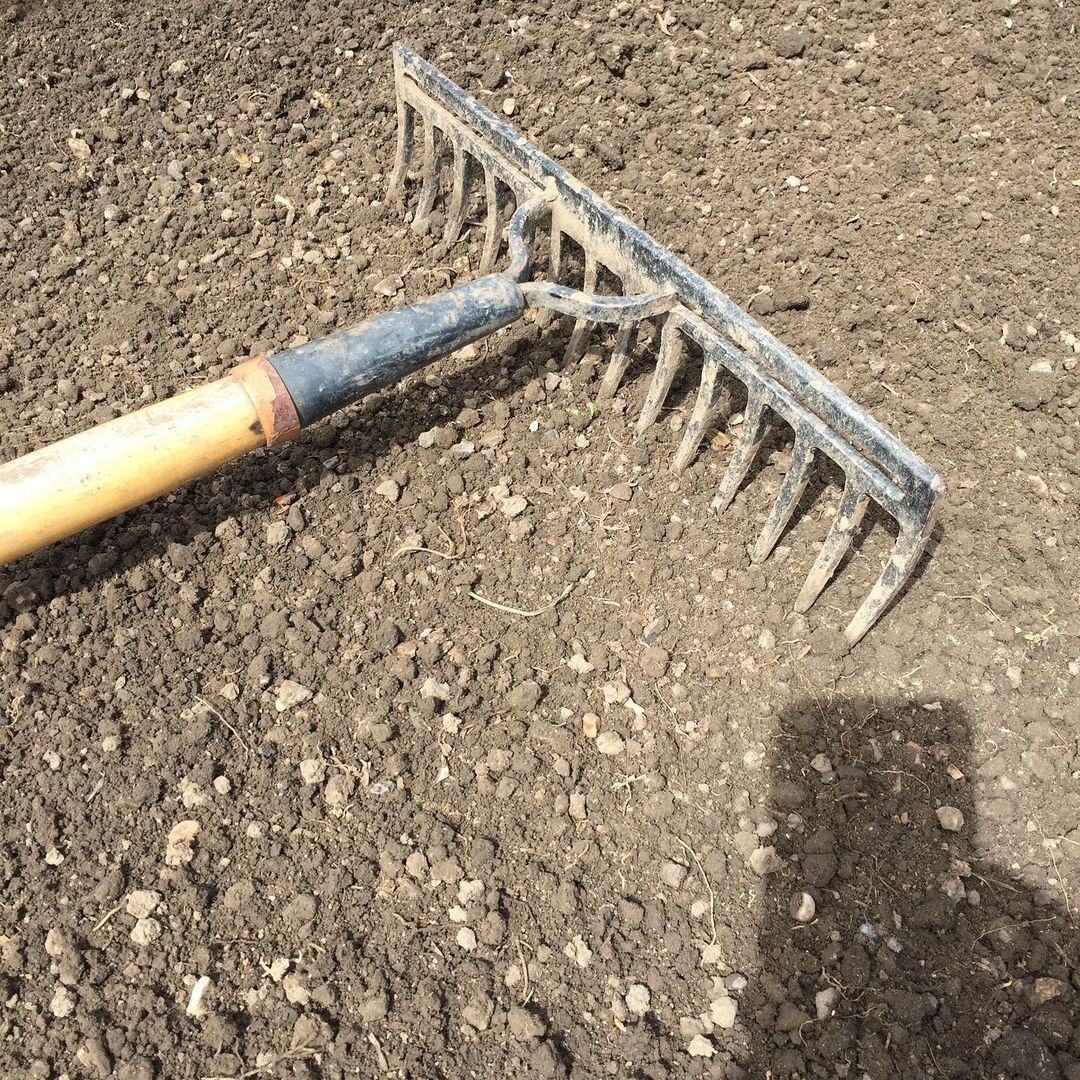
Parts of the garden rakes can be brushed using a fairly hard brush so that it is cleaner to the maximum. You can clean and brush it right under running water so that the dirt can be removed to the maximum. Before storing, you can wipe it with a clean cloth to keep it moist and avoid moldy. Brush Garden Rakes from @flowers_food_garden
Garden Hose
A garden hose is a convenient way to water your plants since you can easily carry it around and spray water without needing to go outside. It is also used to wash your car, pets and other objects. However, like other gardening tools, it gets dirty with mud, fertilizers and bacteria. It is important to clean your garden hose regularly so that it is safe to use for watering your herbs and vegetables.
To clean a garden hose, first rinse it with water to remove any loose dirt. Next, fill a bucket halfway with warm water and liquid soap. Add your garden hose to the bucket and let it soak for 20 minutes. Then, scrub the nozzle with a scrub brush or disposable toothbrush. Rinse and scrub the hose again until it is clean. Repeat the process for the hose end and wipe it with a damp cloth to prevent corrosion. After that, you can enjoy your clean hose!
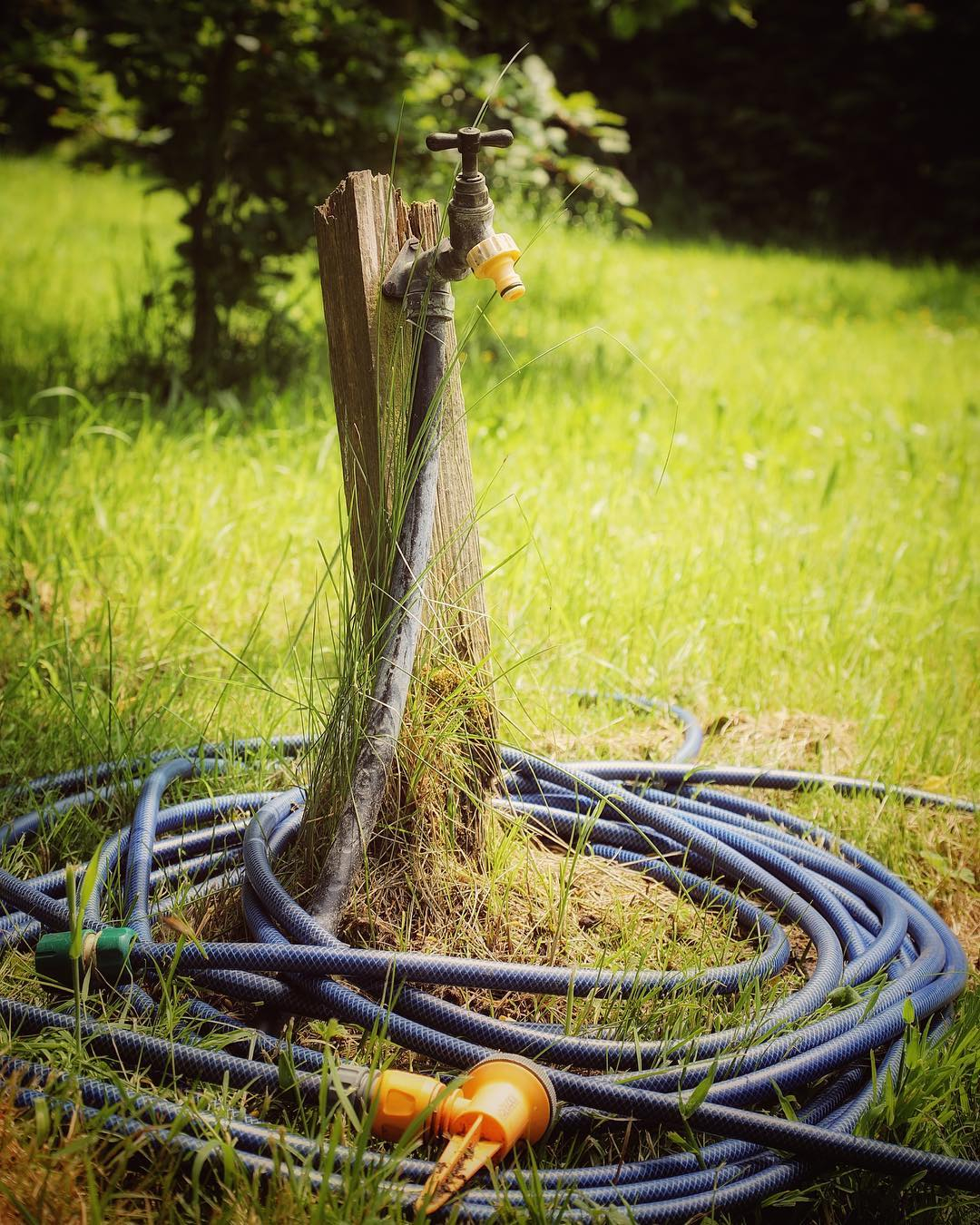
You can brush the garden hose to remove and clean it from the mud or soil that sticks. After cleaning and brushing, you can dry it in the sun so you can store it dry. Hanging it after use is the smartest idea. Brush Garden Hose from @g0lfw

So that your garden hose doesn’t get dirty easily, you can pay attention to how to store it. For example, you can hang it on the faucet holder which is made of brass so it’s not easily damaged either. That way, the garden hose storage is not easily dirty because it is not exposed to the ground. Garden Hose Holder from @119houseonthehill




















